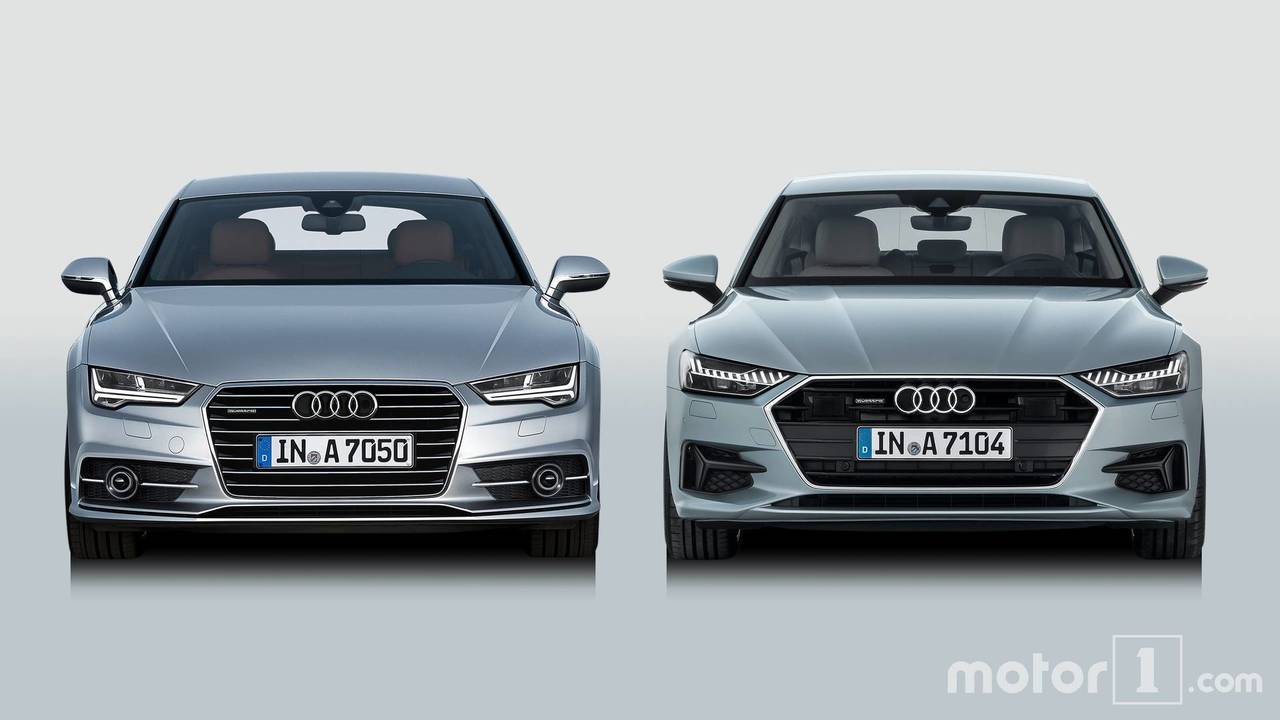How does the new, handsome A7 compare to the old model?
The Audi A7 is a handsome sedan or sportback that comes to mind when you think of elegant sedans. The A7 has been a key part of the German marque’s lineup ever since 2012. It is all new for 2019, with many changes. Let’s dive deeper into the second-generation sportsback and compare it to the previous model.
Front

Although the front fascia doesn’t look drastically different, it is different enough. The grille is more prominent, sharper, and lower than the previous model. The headlights are slimmer and have new LED strips. And the vents at the bottom have been trimmed to make it stand out. While the same aggressive and sporty themeing was used on the previous model, the 2019 model is more effective at expressing that message.
The same iconic sportback styling is still available, thankfully. The 2019 model is sharper than the previous model. The overall look of the A7 is more sleek thanks to a stronger crease and a more defined shoulder line. The fuel filler cap is almost horizontally positioned on the front fender because of the sharpness of the shoulder. The package now measures 195.6 inches in length, which is 0.6 inches (15.24 millimeters), shorter than it was before.
Rear

The A7’s major changes are concentrated in the rear. The standard setup has been replaced by full-length taillights made up 13 strips of LEDs. They vary in height and width across the trunklid. The dramatic corners are connected by a narrow strip between the Audi badges and license plates. The package is completed by a new diffuser and faux exhaust tips with chrome trim. The cabin has been redesigned in the same way as the rear. It also features some significant improvements over the previous model. The new grille has a more angled design for the central section of the steering wheel. It is no longer circular in shape. The new A8’s dashboard and door panels have more horizontal lines that closely match the design of the A8. You can also use the same infotainment system. The new 12.3-inch Virtual Cockpit replaces the existing analog cluster. The primary infotainment controller for the dash is a 10.1 inch touchscreen system called MMI touch Response. Just below, a smaller 8.6-inch touchscreen is found. It controls features such as climate control and can show a keyboard when entering phone numbers or addresses.
The new platform also increases rear legroom and headroom. The interior length has increased by 0.8 inches (21 millimeters). There are both 5-lace and 2-plus2 seating options. Similar to the front seats, the rear seats also get a slight update. The new Audi A7 is a significant upgrade to the previous model. The 3.0-liter turbocharged V6 engine found in the A8 will also be on the new Audi A7. The engine is paired to a 48-volt lithiumion battery and produces a healthy 369 horsepower (250 kilowatts). It also generates 369 pound-feet (569 Newton-meters of torque), allowing for a sprint of just 5.3 seconds (0-60 mph) and a maximum speed of 155mph (250 kmh).
The European market will have a range of options for four- and six-cylinders, which includes diesels. The Audi A7 will be launched in Germany in February. The U.S. is expected to follow in the latter part of 2018.


